
The history of Latvia began around 9000 BC with the end of the last glacial period in northern Europe. Ancient Baltic peoples arrived in the area during the second millennium BC, and four distinct tribal realms in Latvia's territory were identifiable towards the end of the first millennium AD. Latvia's principal river Daugava, was at the head of an important trade route from the Baltic region through Russia into southern Europe and the Middle East that was used by the Vikings and later Nordic and German traders.

The Latvia men's national basketball team represents Latvia in international basketball. They are organized and run by the Latvian Basketball Association. Latvia has reached the European Basketball Championship 15 times, with their ultimate success occurring during the inter-war period, when they became the first team to win the tournament in 1935. Four years later, they had another impressive run to come away with the silver in 1939. Although after 1939, Latvia were forced to suspend their national team operations, due to the Occupation of the Baltic states during World War II. Latvia regained independence in 1991, with their national team taking part in international competition once again a year later.
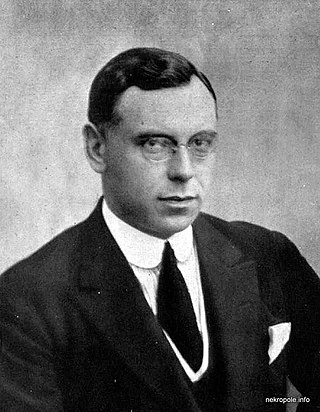
Zigfrīds Anna Meierovics was a Latvian politician and diplomat who served as the first Foreign Minister of Latvia from its independence until 1924 and again from December of the same year until his death. He also served two terms as the Prime Minister of Latvia from June, 1921 to January, 1923 and from June 1923 to January, 1924. He was one of the founders of the Latvian Farmers' Union, one of Latvia's oldest political parties.
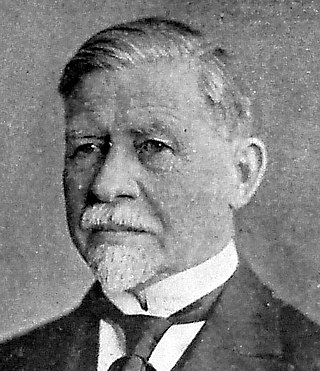
Jānis Pauļuks was a Latvian politician and public figure. He held the office as Prime Minister of Latvia from 27 January to 27 June 1923.
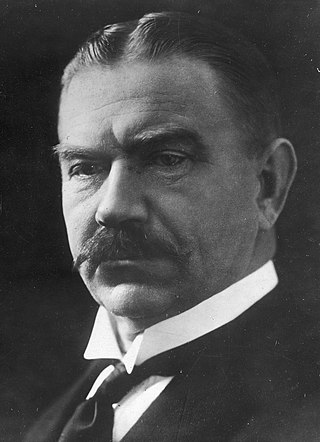
Arturs Alberings was the 6th Prime Minister of Latvia. He held office from 7 May 1926 to 18 December 1926.
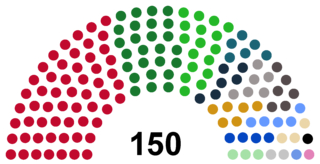
The Constitutional Assembly of Latvia was independent Latvia's first elected legislative body. Its main task was creating the constitution of Latvia, the Satversme, which is still in effect to this day. The Speaker of Assembly was Jānis Čakste, who later became the first President of Latvia. The assembly functioned from May 1, 1920, until November 7, 1922, when the 1st Saeima convened.

Parliamentary elections were held in Latvia on 14 and 15 July 1940, alongside simultaneous elections in Estonia and Lithuania, following the Soviet occupation of the three countries. The Communist Party of Latvia was legalised and it created the "Latvian Working People's Bloc" to take part in the elections. It was the sole permitted participant in the elections as an attempt to include the Democratic Bloc, an alliance of all now-banned Latvian parties except the Social Democratic Workers' Party, on the ballot was suppressed. The main figures of the Democratic Bloc were either arrested and deported or shot shortly afterwards, while a few managed to escape the repression by fleeing from the country. As was the case in Estonia and Lithuania, the elections were blatantly rigged, with the Working People’s Bloc winning every seat.

The Latgalian Farmer-Labour Party, also known as the Latgalian Progressive Farmers, was a political party in Latvia during the inter-war period. The party contested elections in an alliance with several other parties under the name United List of Latgalian Small Landless Farmers and Latgalian Labour Party. It was led by Jezups Trasuns.
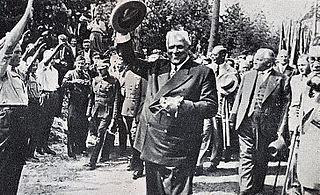
The 1934 Latvian coup d'état known in Latvia also as the 15 May Coup or Ulmanis' Coup, was a self-coup by the veteran Prime Minister Kārlis Ulmanis against the parliamentary system in Latvia. His regime lasted until the Soviet occupation of Latvia in 1940.

2nd Saeima was the parliament of Latvia from 3 November 1925, until 5 November 1928. The Social Democrat Pauls Kalniņš continued to hold the post of Speaker of the Saeima to which he was first elected during the 1st Saeima.

3rd Saeima was the parliament of Latvia from 6 November 1928 until 2 November 1931. Social Democrat Pauls Kalniņš continued to hold the post of Speaker of the Saeima to which he was first elected during the 1st Saeima.

4th Saeima was the parliament of Latvia from 3 November 1931 until the 15 May 1934 Latvian coup d'état. It was the last democratically elected Saeima until the restoration of Latvia’s independence in 1991 and the 5th Saeima elections in 1993.

Latvian Provisional National Council was a political organization established on November 29, 1917 in Valka, Governorate of Livonia by the Latvian Refugee Support Central Committee, Latvian political parties and representatives from the Provisional Land Council of Vidzeme and the Provisional Land Council of Latgale. Due to German army advances, the National Council also met in Petrograd, in secrecy from the new Bolshevik regime.

Riga is one of the five multi-member constituencies of the Saeima, the national legislature of Latvia. The constituency was established in 1922 when the Saeima was established following Latvia's independence from the Soviet Union. It consists of the city of Riga and overseas voters. The constituency currently elects 36 of the 100 members of the Saeima using the open party-list proportional representation electoral system. At the 2022 parliamentary election it had 565,297 registered electors.

Semigallia is one of the five multi-member constituencies of the Saeima, the national legislature of Latvia. The constituency was established in 1922 when the Saeima was established following Latvia's independence from the Soviet Union. It consists of the city of Jelgava and municipalities of Aizkraukle, Bauska, Dobele, Jēkabpils, Jelgava and Tukums in the region of Semigallia. The constituency currently elects 13 of the 100 members of the Saeima using the open party-list proportional representation electoral system. At the 2022 parliamentary election it had 205,937 registered electors.
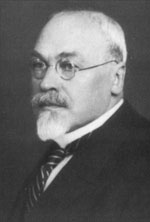
The 1927 presidential elections in Latvia took place in April 5, 7, and 8, 1927, during the term of the 2nd Saeima. The elections took place in extraordinary circumstances, as the former President of Latvia, Jānis Čakste, had died while holding the office of President. The election of the president this time proved to be very difficult as only after nine unsuccessful votes in three Saeima sittings for the 2nd President of Latvia was Gustavs Zemgals elected.

Livonia is one of the five multi-member constituencies of the Saeima, the national legislature of Latvia. The constituency was established in 1922 when the Saeima was established following Latvia's independence from the Soviet Union. It consists of the city of Jūrmala and municipalities of Ādaži, Alūksne, Cēsis, Gulbene, Ķekava, Limbaži, Madona, Mārupe, Ogre, Olaine, Ropaži, Salaspils, Saulkrasti, Sigulda, Smiltene, Valka, Valmiera and Varakļāni in the region of Livonia. The constituency currently elects 26 of the 100 members of the Saeima using the open party-list proportional representation electoral system. At the 2022 parliamentary election it had 396,278 registered electors.


















